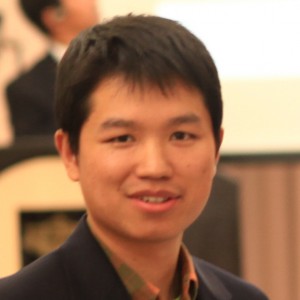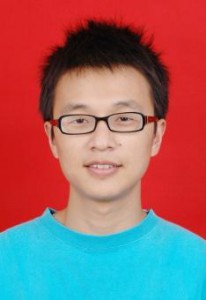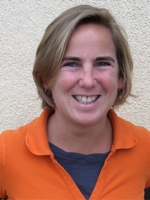
TITLE: Postdoctoral Research Fellow (2011 –
EMAIL: liuy6@nullucla.edu
OFFICE: Boyer 570
WEBSITE: http://liuyi.co
EDUCATION:
PhD Pathology, Case Western Reserve University, 2011
BS Biological Sciences, Peking University, 2005
Research Interests
I’m interested in the role of NF-kB signaling in hematopoiesis.
Tools
PyHRM: High Resolution Melt Analysis in Python (OpenSource)
NFkB gene: A list of NFkB (NFkappaB, NF-κB) target genes hosted on Github. Curated based on Dr. Thomas Gilmore’s list.
Publications
Koushik Roy, Simon Mitchell, Yi Liu, Sho Ohta, Yu-sheng Lin, Marie Oliver Metzig, Stephen L Nutt and Alexander Hoffmann. 2019. The switch from B-cell proliferation to plasma cell differentiation phases requires dynamic NFκB/cRel downregulation. Immunity. PMID: 30850343
Wen-Hsien Liu, Seung Goo Kang, Zhe Huang, Cheng-Jang Wu, Hyun Yong Jin, Christian J. Maine, Yi Liu, Jovan Shepherd, Mohsen Sabouri-Ghomi, Alicia Gonzalez-Martin, Shunbin Xu, Alexander Hoffmann, Ye Zheng, Li-Fan Lu, Nengming Xiao, Guo Fu and Changchun Xiao. 2016. A miR-155–Peli1–c-Rel pathway controls the generation and function of T follicular helper cells. J. Ex. Med. PMID: 27481129
Almaden JV, Liu YC, Yang E, Otero D, Birnbaum H, Davis-Turak J, Asagiri M, David M, Goldrath AW and Hoffmann A. 2016. B cell survival and development controlled by the coordination of NFκB family members RelB and cRel. Blood. PMID: 26773039
Almaden JV, Tsui R, Liu YC, Birnbaum H, Shokhirev MN, Ngo KA, Davis-Turak JC, Otero D, Basak S, Rickert RC, Hoffmann A. 2014. A Pathway Switch Directs BAFF Signaling to Distinct NFκB Transcription Factors in Maturing and Proliferating B Cells. Cell Rep. PMID: 25497099
Liu YC, Simmons DP, Li X, Abbott DW, Boom WH, Harding CV. 2012. TLR2 Signaling Depletes IRAK1 and Inhibits Induction of Type I IFN by TLR7/9. J. Immunology. PMID: 22227568
Simmons DP, Wearsch PA, Canaday DH, Meyerson HJ, Liu YC, Wang Y, Boom WH, Harding CV. 2012. Type I interferon drives a distinctive dendritic cell maturation phenotype that allows continued class II MHC synthesis and antigen processing. J. Immunology. PMID: 22371391
Liu YC, Gray RC, Hardy GA, Kuchtey J, Abbott DW, Emancipator SN, Harding CV. 2010. CpG-B oligodeoxynucleotides inhibit TLR-dependent and -independent induction of type I IFN in dendritic cells. J. Immunology. PMID: 20181884
Simmons DP, Canaday DH, Liu Y, Li Q, Huang A, Boom WH, Harding CV. 2010. Mycobacterium tuberculosis and TLR2 agonists inhibit induction of type I IFN and class I MHC antigen cross processing by TLR9. J. Immunology. PMID: 20660347
Anis MM, Fulton SA, Reba SM, Liu Y, Harding CV, Boom WH. 2008. Modulation of pulmonary dendritic cell function during mycobacterial infection. Infect. Immun. PMID: 18039834
Pennini ME, Liu Y, Yang J, Croniger CM, Boom WH, Harding CV. 2007. CCAAT/enhancer-binding protein beta and delta binding to CIITA promoters is associated with the inhibition of CIITA expression in response to Mtb 19-kDa lipoprotein. J. Immunology PMID: 17982082
Li L, Bin LH, Li F, Liu Y, Chen D, Zhai Z, Shu HB. 2005. TRIP6 is a RIP2-associated common signaling component of multiple NF-kappaB activation pathways. J. Cell Sciences PMID: 15657077
 Postdoctoral Research Fellow
Postdoctoral Research Fellow
rfagerlund@nullucsd.edu
Office: NSB 3318
Phone: 858-822-4673
Ph.D. General Microbiology, University of Helsinki (2008)
M.S. General Microbiology, University of Helsinki (2003)
Research Interests
Coming soon.

TITLE: Postdoctoral Research Fellow
OFFICE: Boyer 535
PHONE: 858-822-4673
EDUCATION:
Ph.D. Biophysics, Nanjing University (2010)
B.S. Biophysics, Nanjing University (2005)
Research Interests
Biological systems are complex systems that can be understood in terms of design principles. Based on this premise, I have carried out my research in these areas:
- Design principles of small biological network motifs, with a special focus on interlinked feedback loops.
- Roles of reversible phosphorylation in contributing to the dynamical feature of Neurospora circadian clock.
- Dynamics of P53 signaling network in response to DNA damage.
Now I am focusing on an HIV project, aiming to construct a comprehensive mathematical model of host immune response to HIV exposure. I will use the model to study the dynamics and effectiveness of the host response and develop therapeutic strategies for HIV infection
Publications
| Citation |
Link |
Reversible phosphorylation subserves robust circadian rhythms by creating a switch in inactivating the positive element.
Cheng Z, Liu F, Zhang XP, Wang W. Biophys J. 97(11):2867-75. (2009) |
PubMed |
Cell fate decision mediated by p53 pulses.
Zhang XP, Liu F, Cheng Z, Wang W. PNAS. 106:12245-50. (2009) |
PubMed |
Robustness analysis of cellular memory in an autoactivating positive feedback system.
Cheng Z, Liu F, Zhang XP, Wang W. FEBS Lett. 582:3776-82. (2008) |
PubMed |
Linking fast and slow positive feedback loops creates an optimal bistable switch in cell signaling.
Zhang XP, Cheng Z, Liu F, Wang W. Phys Rev E. 76, 031924. (2007) |
PubMed |
TITLE: Professor
EMAIL: ahoffmann@nullucla.edu
EDUCATION:
Ph.D. Rockefeller University, 1994
B.A. Cambridge University 1988
Research Interests
Alex’s interests began to focus on biology when undergraduate research on topoisomerases provided the thrill of discovery while studying for a Physics BA at Cambridge. During his graduate research with Dr. Bob Roeder at Rockefeller University, he cloned genes for TBP and some components of the TFIID complex, and developed the now popular His-tag to purify and characterize recombinant proteins. During his postdoctoral training with Dr. David Baltimore at MIT and Caltech, he first focused on HIV and then aimed to understand the dynamic control of the NFκB signaling network and its ability to produce distinct gene expression programs. Reactivating undergraduate math and physics skills, and with the help of really smart students and postdocs, Alex has pursued a Systems Biology approach (iterating between quantitative experimentation and computational modeling) in order to understand how molecular networks generate precise immune responses to pathogens and control development of the immune system. A recurring theme of our research is that it is the kinetic properties of these regulatory networks that provide the explanations for understanding specificity, robustness, diversification, fine-tuning, and other characteristics of biological processes.
Alex is PI of the Signaling Systems Laboratory, first at UCSD (2003-2013) and then at UCLA (since 2014). At UCSD he was Professor of Chemistry and Biochemistry, and Director of the Graduate Program in Bioinformatics and Systems Biology, was PI of the P50 Center of Excellence for Systems Biology (SDCSB) and co-founded the BioCircuits Institute (BCI). At UCLA he is the Asher Professor of Microbiology in the Department of Microbiology, Immunology and Molecular Genetics (MIMG), and the director of the Institute for Quantitative and Computational Biosciences (QCBio).









